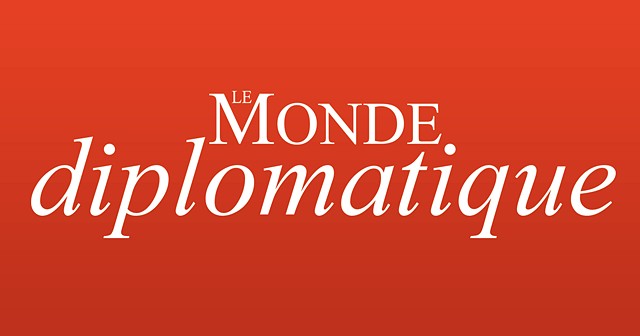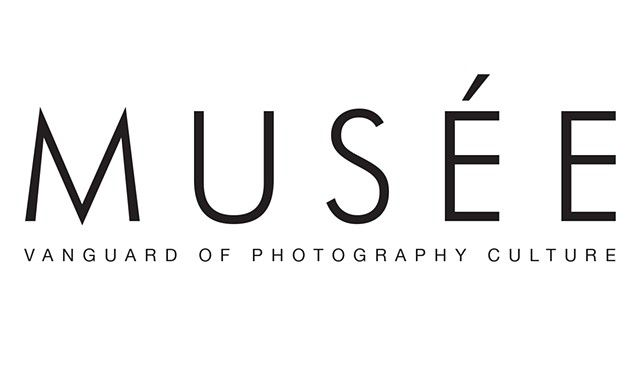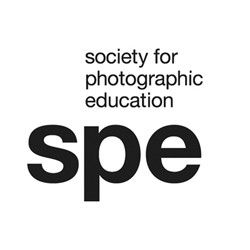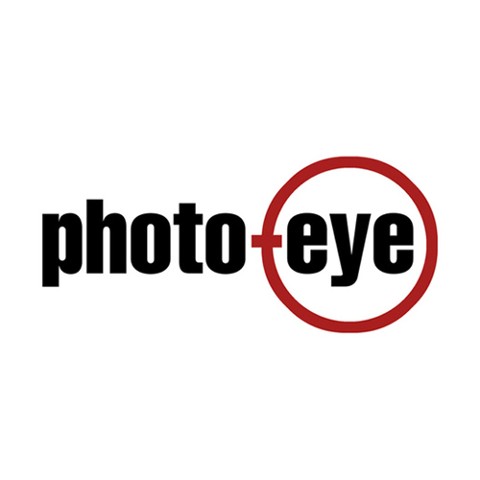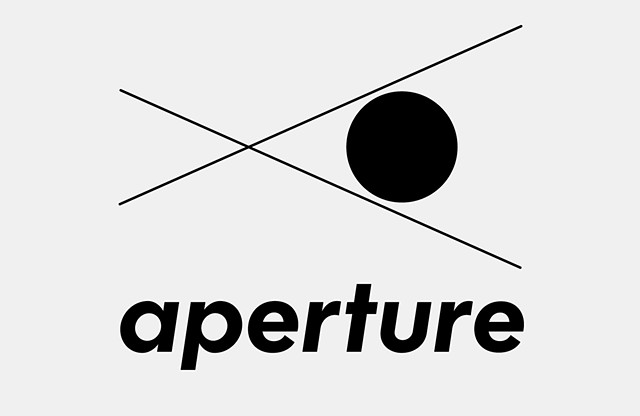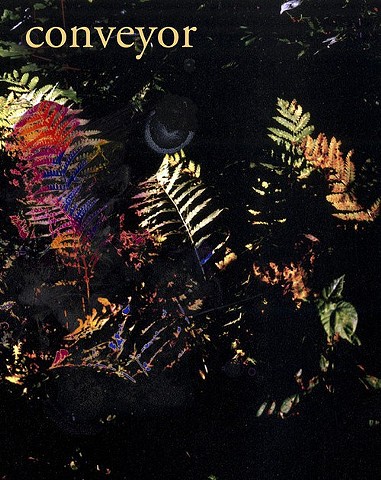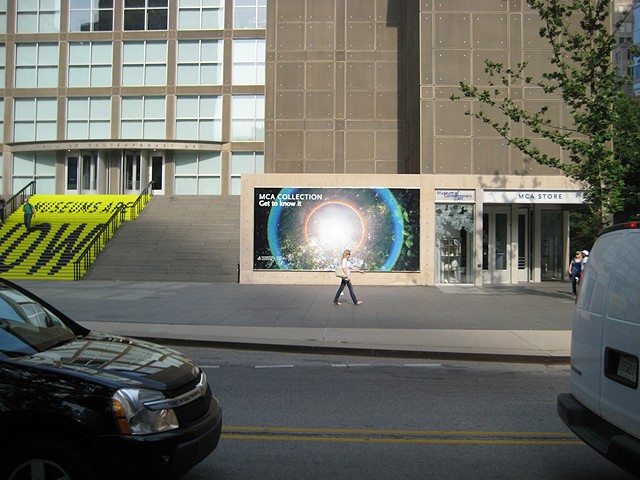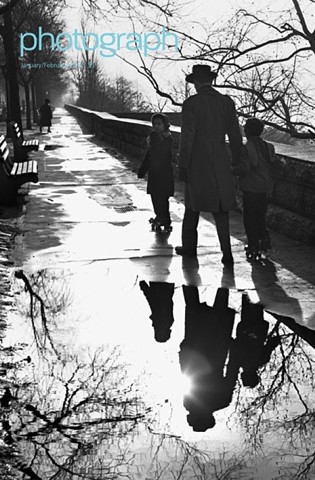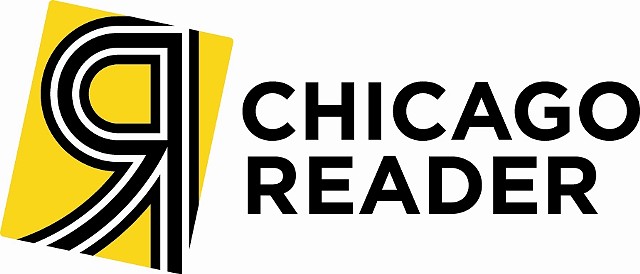December 7, 2023
The American photographer Adam Ekberg constructs experimental arrangements in front of the camera. His motifs are extremely fleeting and ultimately only exist as photographs. They usually begin as sketches, which he then seeks to transform into “non-scientific experiments”. They are seemingly pointless and yet highly controlled experiments. The motifs are therefore not only staged and recorded by the artist, but actually generated in an elaborate manner. Quite banal everyday objects are used. The construction of a still life is sometimes a long process in which many things go wrong until the “moment when everything comes together”, as the artist says. Timing plays a decisive role here – you have to press the shutter release at the right moment. The artist speaks of “a kind of alchemy” in which a “transformation of the everyday into the poignant” takes place. In the poetic photographs, it is as if the objects have a life of their own. None of the works are digitally manipulated.
Adam Ekberg's Minor Spectacles at CLAMP
By Makenna Karas
November 2023
We were all born into an ephemeral world. It never promised us permanence, we have reached out for it all on our own. Good art extends that reach. It takes a moment, a second, a click of a shutter, and offers up a record of something that has long since gone away from us, but that happened nonetheless. We can be sure of that.This desire to freeze dissolving moments is exactly what artist Adam Ekberg explores in his exhibit “Minor Spectacles”, a series of photographs documenting occurrences that existed only for the second that it took to capture them. Growing out of the original exhibit that ran from January through September of 2023 at the George Eastman Museum in Rochester, New York, the series is the product of Ekberg’s mission to capture the beauty of ordinary things, creating stains of proof that time cannot easily scrub away.
There is a train of motion barrelling through each photo that cultivates an illusion of continuity, an illusion that this might never have to end. When you look at the pumpkin in “Pumpkin Trampoline”, suspended in mid-air, your mind fills in the blank. You can almost see it moving, bouncing in a perpetual motion that can only be imagined. It suggests that endless continuity, of moments and of ourselves, can only ever be illusory. Ekberg himself states that he wants these photos to have the feeling that they “potentially could kind of go on forever”.
He fosters a similar illusion in his shot “Minor Shelter”, where a stream of milk is captured as it shoots through the air, ricocheting off of a cocktail umbrella, and pooling onto the floor. At first glance, there is again the temptation to craft a narrative of continuity. There is motion there and we want to watch it forever. Yet we know that the milk will run out, that its existence expired just moments after the shot, offering a new appreciation for it. He takes a carton of milk and turns it into a beautiful thing that you don’t want to lose, but will.
Running alongside this ephemerality of the series resides an element of precarity that adds further potency to the viewing experience. In “Balloon Tree”,, we are invited to juxtapose the fragility of the balloons with the sturdiness of the forest. By constructing a tree out of colorful balloons, icons of impermanent joy, Ekberg seems to be inviting us into a world that exposes our own reality as fragile, mortal beings wading through a world that will outlast us.
So, the shots are communal in a sense, asking viewers to ponder their own ephemerality. Yet there is a current of aloneness crawling through the pixels that Ekberg purposely exploits. When discussing his process, he explains that he is always searching for a “simple environment” that will “underscore the aloneness of the happening”. There are no people in the frame, no hands, no faces, no traces of life. Each construction stands isolated , exploring its own relation with the camera for the second they existed alone with one another. You feel that aloneness coming through. You feel that you are the only one witnessing it, a rare sensation in our world.
The split-second precision of Adam Ekberg's 'Minor Spectacles' at the Eastman MuseumBy Rebecca Rafferty
March 2023The one-man show "Minor Spectacles" by photographer Adam Ekberg runs through Sept. 6 at the George Eastman Museum.
Every now and then you’ll be the sole spectator of something astonishing, and if you didn’t record it, you’ll be left trying to prove it to someone. Video, or it didn’t happen.
New Jersey-based photographer Adam Ekberg plays in this blink-and-you'll-miss-it territory with his one-man show, “Minor Spectacles,” now on view at George Eastman Museum’s Project Gallery.
Ekberg’s funny little pictures simulate odd phenomena with the perfect-timing-and-alignment precision of a Rube Goldberg machine.
“I make photographs of things that I make happen in the world,” Ekberg says in a video that plays at the show.
In “Occurrence #2,” milk explodes upward from a glass on a kitchen table, the liquid’s weightlessness presumably captured the moment after an object was dropped into the glass. In “A Minor Shelter,” a stream of milk arcs from a pierced jug onto a paper umbrella protecting the flame of a lighter, which is kept lit by the umbrella’s stick wedged to hold the button down.
Other images are less whimsical and more witchy, like “Burning Skull,” featuring a cow’s cranium ablaze on a sand dune.
Ekberg says he only has two parameters for creating the images: he needs to capture the occurrence at just the right moment, and there is zero digital manipulation. Ekberg admits this often requires a lot of trial and error.
“Whatever transpires in the blink of an eye can be either a minor occurrence or a great spectacle, depending on our perception of that event,” reads the curatorial text to the show. “What happens when we are the sole witness to an event?”
click to enlarge "Occurence No. 2 by Adam Ekberg. - PHOTO PROVIDEDWhat happens is we either make our own meaning, or shrug and get on with our lives.
“When people see my work, I hope it’s an offering, and I hope it meets them where they’re at,” Ekberg says in the video. “I’m following my own personal rabbit hole to the bottom.”
Ekberg found his rabbit hole shortly after he moved to Chicago for graduate school from Maine, where he had been taking care of people with HIV and AIDS. During that time, he witnessed several documentaries get made about the residents that he felt didn’t quite capture the experience of being with someone at the end of their life.
“And so I drove back to Maine, and with the help of a friend we went up a mountain at dusk and took a picture of a disco ball radiating light throughout the woods,” Ekberg said.
Producing the image involved lugging a car battery, power inverter, and smoke machine to the site. To Ekberg, staging this strange, symbolic event represented the experience of facilitating end-of-life care better than photographing a dying resident.
The resulting image is quietly arresting. Sparkling light dances over the blue-shadowed snow drifts. From skeletal limbs hangs a globe of mirrors emitting beams of light, like the last pulses of an earth-bound quasar.
Not every Ekberg image is so profound, nor is it meant to be. There’s a lot of subtle, silly tension in the balancing acts of stacked objects, or the orchestration of a light beam bouncing between mirrors in a door frame, or tilting dominoes on the brink of toppling.
“Minor Spectacles” continues through Sept. 6. Adam Ekberg will give a talk at the museum at 6 p.m. on April 4.
Adam Ekberg: “On the Surface of a Planet” at Capsule GalleryBy Donna Tennant, November/ December 2016
Although it may be difficult to believe, Adam Ekberg’s archival pigment prints are not manipulated using a computer software program such as Photoshop. In fact, the camera itself is not a major part of his work— it’s just a vehicle to capture a moment in time. Instead, Ekberg manipulates what is going on in his photographs, which can be quite astounding. First, the artist finds a remote location to set up his shot. Since Ekberg divides his time between Vermont and Florida, the location is often a forest or a field, sometimes snow-covered. On the Surface of a Planet, for example, shows a glowing crystal situated under a moss-covered rock deep in a forest. Another color photograph more difficult to describe is Extinguishing a Small Flame: for this piece, Ekberg placed a jug of milk in a forest clearing. He then made a small hole in the side of the container so that a thin stream of milk arcs out of the jug; amazingly, the liquid is in the process of extinguishing a flaming book of matches. The timing must be perfect, and even then, it seems nearly impossible to coordinate the lighting of the matches and the opening of the hole in the milk container, not to mention capturing it all on camera.
Ekberg also has an ongoing series in which he tosses an object into the air repeatedly, shooting it until he gets the result he wants. In Balloon Dog in the Sky, a yellow balloon dog appears to be suspended high above the earth, but how does one toss a balloon in the air? And if it’s filled with hydrogen, how does it not drift away? In other pieces, dominoes topple over on the desert floor, a skull is on fire, and, in a complex piece involving five milk jugs, each has a stream of milk flowing from a hole in its side into a container below it. The artist talks about his “longing to see things in the world that are unlikely or impossible,” and his ability to actualize that goal takes incredible patience and ingenuity. There is something of the early days of photography here, when its practitioners were experimenting constantly to see what they could capture on film. Ekberg captivates the viewer by setting up and executing miraculous moments, and there seems to be no limit to his imagination.
The Omnipresence of Adam Ekberg
By Jamie M. Allen
Light is the means by which we visually experience the world around us. A field of flowers basking in bright sunlight may provide feelings of warmth and happiness, while a frozen lake portrays the chill and quiet of winter. A lack of light may prevent us from walking into an unfamiliar room, while the flashing neon of Las Vegas beckons us to its doors. The wavering radiance of a fire, the dim illumination of a flashlight, and the gentle glow of a candle all evoke specific feelings and physical properties. Light has a dual nature as physical thing and sensual experience, but it is a key element: without it, we could not visually experience the world around us. Light becomes the element that, through subtle manipulation, can turn an everyday space into a dreamlike and fantastical stage. Adam Ekberg’s surreal photographic worlds are anchored by his masterful manipulation of light as both agent and metaphor.
By nature, photography is the record of light. It either affects photographic film and paper through photochemical processes, or it is recorded onto a digital sensor through the miracles of modern technology. The photographic eye simulates the very nature of seeing, as light enters through a lens/pupil and is recorded/processed on something sensitive to its energy. Considering this, photography is about an individual’s ability to selectively record and control the action of light, directed within a frame of the photographer’s choosing, but always in the attempt to record the world as they want their viewers to experience it.
Photographically speaking, light can work on the photographic plane in many ways. Light can direct our sense of space, building up the dimensions of the physical world as William Henry Fox Talbot did during the earliest stages of photography. Light can create a mood and set the stage that interprets a space as Brassaï so undeniably accomplished in his series Paris by Night. Light can stop motion in the act of scientific observation as it did in the hands of Harold E. Edgerton. Light can record a singular pristine shape, such as a cloud in Alfred Stieglitz’s Equivalents series. Light can exaggerate the climate of a space as seen in the Desert Cantos works by Richard Misrach. Adam Ekberg’s photographs use light in all of these ways, as is revealed with a careful reading of his recent book The Life of Small Things (Waltz Books, 2015). As the most vital element in Ekberg’s photographic language, light is employed as a material agent to show a mysterious and playful world where everyday objects take on life, and Ekberg’s own omnipresence is a constant reminder of our ability to take action in the fleeting world around us.
In Paper Airplane, 2014 (Figure 1), Ekberg captures a handmade toy mid-flight as the sunlight defines each fold. For a brief moment, we are in suspended disbelief, as if it is perfectly ordinary for that object to be floating among the clouds. Yet the presence of someone just outside our view becomes apparent, and we are forced to contemplate how this image came into being: idea, plan, experimentation, countless flights of this and similar planes, luck, and then, the decisive moment captured.
In one of his most recent images, Ekberg hurries a frozen lake into spring by literally fanning the flames of a fire (Figure 2). The fan’s action is palpable as it blows the blaze, compressing it to the ground and illuminating the dusting of snow. The orange glow of the fire is in direct conversation with the horizon, where the sun sits out of sight, foreshadowing the eventual fate of the fire. Then again, the entire scenario is improbable, even absurd. A fan on a snowy lake in the middle of nowhere attached to a source of electricity?
Perhaps Closed System, 2015 (Figure 3), offers a clue to unpacking this mystery. Clearly this Rube Goldberg-inspired machine required vision and forethought, but there is more to the image than just a contraption that uses the power of the sun to ignite and extinguish a fire. The framing of the view emphasizes where the action begins on the left, and the shadows are parallel to the broom, which creates an arrow pointing to where the final action will take place. Yet, not unlike the Animal Locomotion photography of Eadweard Muybridge, there are inconsistencies in the scene, as the stick holding the balloon jumps from the right to the left side of the frame in the fifth image. Thus, it becomes apparent that these six images are a compilation of attempts that make up the final photographic reiteration of the experiment. Ekberg’s role as creator becomes clear.
This photographically constructed scene is not unlike a row of dominoes (Figure 4), where the directionality of the light is carefully controlled, creating a string of domino-shadow-domino that forms a constant ribbon on the craggy mud. They are performers that tumble into, across, and out of our line of vision, curiously suspended in action for eternity. Or the lawn chair caught mid-explosion (Figure 5), which just moments before sat quietly in the farm field, awaiting its fate. In these images, Ekberg, not unlike Doctor Frankenstein, gives life to lifeless objects that would typically have little sway over our emotions. By making the unlikely possible, he draws our attention to the fleeting nature of any moment, but with an undeniable, deadpan sense of humor as he shows us the most implausible occasion that could follow.
Yet there is also a somber and art historical tone in Ekberg’s work. The image Candle, Skull and Laser, 2014 (Figure 6), combines typical elements of vanitas paintings, a seventeenth-century Dutch genre that conveyed messages about human mortality. The photographer turns the conventional imagery on its side, as a sheep skull replaces the traditional human one and a red laser cuts through the darkness of the scene. The candle is an ephemeral and natural form of light, whose time is limited. The laser, however, is manmade and thus a symbol of endurance. The scene becomes a balance between the fleeting nature of the individual and the longevity of the human race.
In all of his photography, Ekberg has a particular ability to capture the physical and sensual natures of light, as seen, for example, in Arrangement #1, 2009 (Figure 7). We don’t know how this arrangement came into being, how long it will last, or if one element will win out over another. The flashlights illuminate the room and activate the space, but what happens if one battery dies first? Their unblinking luminance supplies physical evidence of the fact that they are not the only things present in the room, as lifeless chairs are turned into ominous shadows and decay becomes evident all around. Yet it is also their light that generates a sense of eerie abandonment, as there is a presence missing from view. Where is the individual who set up the scene, carefully placing the chairs, precisely pointing the beams, setting up the camera, directing the view? Their light circles us back to Ekberg, who has created this scene, leading us down this path and purposefully removing his own physical presence from it. In this way, Ekberg as omnipresent creator is both present in and absent from the scene.
Perhaps no image brings together all of these elements (chance, animation, absurdity, humor, impermanence, presence, absence, and light) better than An Aerosol Container in an Abandoned Peach Orchard, 2012 (Figure 8). Here Ekberg gives life to an otherwise ordinary object. Through his actions, the can becomes dangerous and unguarded, a mechanism working against a dry landscape. There is the impression that within seconds the whole place could be ablaze, overpowering the natural light that gently glows and fades at the horizon. Ekberg uses the physicality of the flame to entice us into the image, giving the smallest element the greatest power. Thankfully, we know that this scene was a creation of his mind and actions and that this small thing has not taken life, running rampant in an attempt to burn down the orchard.
Adam Ekberg’s worlds are spaces of fact and fiction, where his photographic sense of light draws us in and leads us through his tales. From the moment that he envisions each scenario to his use of ordinary objects, Ekberg is always directing the viewer to his presence just outside the frame and the fleetingness of the world around. With humor, he impels us to appreciate the small moments of joy that populate our everyday lives, perhaps urging us to take action on our own whims and fantasies.
Review of The Life of Small Things
By Leo Hsu, April 2016
Adam Ekberg’s The Life of Small Things presents a series of photographs of small events, in which ordinary objects are animated by forces that we may think of as elemental or essential: fire, water, air, light, temperature, gravity. The objects - a disco ball, balloons, jugs of milk, #2 pencils, cocktail umbrellas - are the overlooked stuff of contemporary life, sometimes themselves suggestive of delight, sometimes not. Physics is confirmed; if a pineapple were to eclipse the sun, this is what it would look like. If two flashlights were to shine on one another in an empty room, this is what they would look like, photographed. There are many things that you can do to a lawn chair, some of which will destroy the chair.
Today, using graphics software, nearly anything that can be conceived of can be visually realized, but in The Life of Small Things, Ekberg offers a body of fantastic pictures made in camera, on film. The photographs originate as events in the mind, but they are also records of events in the world. Ekberg’s photographs are coy. They appear to be documentations of experiments, where an object is acted on in order to observe the result, but the images are also performances. The juxtapositions are surprising and humorous, and display an instinct for the way in which wonder can spring from an unexpected application of rational principles. Ekberg’s visual reports feel both unlikely and entirely correct.
Brought together as a book, Ekberg’s photographs become something else entirely. Beyond each photograph’s role as a documentary testament, it’s also descriptive of a certain world that feels consistent across the pictures. A world of farms and city apartments, forests and lakes, nearly completely devoid of human presence, forms a very specific kind of a backdrop for these fantastic occurrences. It’s a context absent of digital technology, of automobiles or airplanes; no technology at hand in Ekberg’s constructions is less than 70 years old. The photograph of a disco ball in the forest is not of just any disco ball; it’s of a particular disco ball, just as the ball is in a particular forest at a particular time of day. There’s a nostalgia for material and an affection for sensations of light, cold and heat. The sameness of mass-produced objects has been refuted by the act of photography. Is this Ekberg’s message, that the pre-digital era allowed us to appreciate small wonders, to see and hear what the embodied world might permit?
The book invites us to identify with the objects in a way that individual images do not. Disco balls and drink umbrellas seem to have been imbued with spirit or anima. This anima may not be obvious in every picture, but when we see objects, motifs, locations repeated, they become familiar. One image of an object provokes curiosity, but several images produces acquaintance. The balloons in one picture seen floating over the trees may be related to these other balloons seen in another image tethered to each other and neither falling nor rising; by the time we see a lonely balloon floating despondently in an empty apartment, its string curled on the floor, the balloons have become characters. Along with the physical spectacles that Ekberg imposes on them, he also gives them the suggestion of self-consciousness. This holds true as well for the quixotic vacuum cleaner set to hoover up all of the snow in the forest (even though we see it only once), the irrepressible flashlights, and the doomed lawn furniture. Ultimately the book suggests epistemological questions. What is the relationship between performance and description? What is the relationship between the way we perceive an event, and the way that we perceive or understand the world in which that event is described as having taken place?
Looking at Ekberg’s list of photographs in the back of the book – the images span eleven years - we can see how his attention shifted over the years, as he moved from simpler descriptions of seeming contradictions, like unexpected manifestations in the forest, to increasingly elaborate constructions. Had the book been laid out in chronological sequence, the flow would have been more about Ekberg’s process. But arranged as it is, we see something that looks like an argument about the many modes across which photographs operate: performance, document, description, invention, narrative, locus of identification. Photographs can be all of these things, and with the book, Ekberg embraces photography’s variable modes. All of these reasons and stories co-exist; Ekberg revels in the pleasure of asking how slippery it can be, both to nail down what we ask of a picture, and what a picture asks of us.
Book of the Week: A Pick by Jim Stone, January 26, 2016
"Not being a fan of television sitcoms, I never watched Seinfeld, but by longevity and success it managed to seep into my cultural consciousness. What stayed with me was the near-universal description of it as 'a show about nothing.'
Something similar could be said about the photographs in Adam Ekberg’s The Life of Small Things, but it would be doing Ekberg — and the book — a great disservice. His work does not aspire to raise our awareness of conflict, exotic places, society’s failures, or the heights and depths of human emotion. None of the serious literary themes of our time are present, but it is a remarkable accomplishment nonetheless.
Published with high production values and understated elegance by Waltz Books, The Life of Small Things is evidence of one man’s imagination and the perseverance to manifest it photographically. Much of photography’s traditional significance stems from its ability to record the observations of a perceptive practitioner. But this book presents nothing we’d ever bump into or even think about accidentally, just Ekberg’s charming and quirky inventiveness. These apparently simple images, if we begin to think about his craft, reveal themselves as remarkably complex. He runs electricity and carries a smoke machine into a remote snow-covered forest to illuminate a disco ball and somehow the lunacy makes sense to us. Ekberg, like a skilled dancer, makes it look easy and — almost — natural."
Review of The Life of Small Things
By Clemency Newman, January 2016
During childhood, most people partake in small ‘experiments’, just because they’re curious and want to see what will happen, including setting fire to things, putting various objects in the microwave and capturing small animals. American photographer Adam Ekberg harnesses this youthful curiosity in his first book, The Life of Small Things, in which he takes often overlooked everyday objects and combines them to form humorous pairings, such as a lighter being kept aflame by a cocktail umbrella or a vacuum cleaner not doing much good in the middle of a frozen lake.
The images consist entirely of split-second moments, often dealing with light and its re-direction, fire or balloons. One depicts two candles standing on a polished wood table, connected at the top by the wick and set alight, the flame just starting to burn and a clear indifference of the possible consequences that could come shortly after, such as the wax dripping all over and ruining the wooden table. Darius Himes’ accompanying essay talks of his own childhood, where he would be driven to such acts by boredom, not worrying about if he broke something or his parents caught him in the act. This childish urge is reflected in Ekberg’s images, harking back to a time when setting fire to something small seemed like the biggest and most exciting event in the world.
Despite the frivolity of the work, it is almost impossible to not realise that each scene must have taken a huge amount of work to set up, the only one breaking this rule seems to be the pineapple thrown in the air and causing an eclipse of the sun. From the chain of milk jugs siphoning from one container downwards to the one below, to the single bubble perfectly centred in an empty room, each scenario is perfectly planned, in minute detail. The most surprising element is that the images seldom contain any people who could have taken part in the set-up, apart from a few phantom limbs. Having previously worked in an assisted living facility for people with HIV/AIDS, Ekberg learnt that the events in The Life of Small Things conveyed absence far more than photographing the spaces of those who had passed. The work has not been manipulated in post-production, an even more impressive feat when it is so easy to just copy and paste with a few clicks of the mouse.
On the surface, the work seems to be all light-hearted, but once the viewer takes a more detailed look at the images, unnerving details start to crop up. A single balloon, which seems to be a few days old is seen sinking back towards the floor, or the dark and dilapidated room in which a pair of chairs and torches face each other. This element again refers to childhood escapism and adds a poignancy and loneliness to the images, further emphasised by the lack of people or even other furniture around the scenarios.
The fleeting moments and huge behind-the-scenes planning of The Life of Small Things combine to create a book that is sure to put a smile on the reader’s face. The nostalgia catalysed by the images reminds the reader of the time when they were also once as careless, advising them to try to look at the world in a new way, the poignancy also serving as a reminder to appreciate those often overlooked details. Ekberg creates something unexpected from the mundane, capturing moments of magic in the everyday.
Adam Ekberg: Orchestrating the Ordinary
By R.C. Baker, Wednesday, January 21, 2015
At first glance, Adam Ekberg’s images might appear to be documentation of some precocious high school student’s science projects: Flashlight beams zigzag between mirrors; a sparkler sputters above a frozen lake. But an aura of witty performances very quickly emerges, shot through with surrealist gravitas. A deadpan title like An aerosol container in an abandoned peach orchard (2012) does little to explain the flame erupting from the can’s nozzle, or who fired it up. And who has strung Christmas lights over that crepuscular creek? What unknown object was dropped into a glass of milk so that a balletic white blob leaps upward? (The technical finesse here is descended from the elaborate high-speed cameras Harold Edgerton invented in the 1940s to capture infinitesimal slices of time, including the ignition of an atomic explosion, and a bullet mid-flight.) In Ekberg’s photos you intuit the production crew just outside the frame, one tossing the pineapple skyward, another pushing the shutter button just as the huge fruit partially blocks the sun (Eclipse, 2012). But you also sense many unseen, unsuccessful shots, where we might see only the butt of the pineapple or a couple of stray fronds poking in from the frame edge. By photographing the vestiges of pointless human activities — setting fire to animal skulls in the desert, hanging up disco balls in snowy woods — Ekberg creates depopulated vistas that are formally lovely and emotionally dense.
Adam Ekberg’s “Orchestrating the Ordinary” at ClampArt
By Gabriel H. Sanchez, February 10th, 2015
Adam Ekberg’s first solo exhibition in New York, “Orchestrating the Ordinary,” presents a collection of sixteen recent photographs that depict surprising, brief moments in time rendered in vivid large format. He stages what he describes as “minor spectacles,” by pointing mirrors toward mirrors, flashlights to flashlights, to create a variety of hypnotic lighting situations in otherwise mundane spaces. Cool and calculated, the images also wear a thin lining of humor.
Ekberg’s images showcase the unique qualities of different kinds of light and matter. In the photograph Candle, mirrors, and laser, 2014, a solitary candle illuminates the wooden table it sits on and a nearby mirror. From outside the frame, a red laser beam cuts through the darkness aimed directly into the mirror’s reflection, dividing the beam into geometrical cross-sections. The two types of light contrast with and complement each other. Elsewhere, in Aberration #8, 2006, and Eclipse, 2012, Ekberg trains his eye on the most vital light source—he made both photographs by pointing the camera directly into the sun. A lens flare appears as a result in both images, and with it, a spectrum of hues unfolds across the frame.
Other photographs fetishize light even further. In A disco ball on the mountain, 2005, a mirrored orb is hung incongruously in a dark and snowy forest, appearing to explode from the inside out; in Outpost #1, 2011, the photographer finds a string of patio lights strewn over a flowing river at dusk. Other works discover formal beauty in the properties of liquid: in the case of Occurrence #2, 2012, it’s spilt milk, evoking the iconic 1957 photograph by Harold Edgerton. One huge splash leaps from its cup and off a vacant dining room table, frozen in time by Ekberg’s camera, a spectacle that might otherwise pass unnoticed.
“Orchestrating the Ordinary” runs through February 14, at ClampArt in New York City.
A beautifully imagined moment: An artist carefully constructs his most fleeting visions
Lauren Hansen, February 2015
What do you get when you combine a wild imagination and a patient, yet determined creative drive? The work of artist Adam Ekberg.
His ethereal photographs have that gloriously coincidental feel, like he just happened across these unlikely events — a skull burning on the Cape Code dunes, a camera going off alone in a forest — and captured them on film.
"Every image begins with the longing to see something in the world that is unlikely or impossible," Ekberg says in an email, "and then doing what I can to make that event happen for at least the length of time it takes me to make an image out of it."
The photograph is a performance and every element, from the light to the landscape, is taken into consideration. Using common, often disposable items as his subject matter — a pineapple, a sparkler, a glass of milk — he works backward from his vision, fastidiously recreating it in real life.The behind-the-scenes stories of how the images are created read like elaborate stage notes to a theatrical production.
"To create the image, 'A disco ball on the mountain,' I needed a disco ball, smoke machine, power inverter, car battery, and flashlight that makes two million candles of luminosity in addition to my camera equipment," Ekberg says. "Everything had to be set up for the photograph to be made at dusk in order for there to be enough light for the exposure, but not too much light so that the effect of the disco ball couldn't illuminate the forest at dusk.""For the image 'Eclipse' I wanted to make a celestial event happen with an everyday object," he says. And so, Ekberg stood in the front yard of his Tampa home and threw a pineapple into the air over and over and over again until he could achieve that perfect alignment.
"After seventy exposures I arrived at an image where not only was the pineapple in just the right spot, but the small amount of sunlight that managed to reach the camera lens generated a circular rainbow around the pineapple."Ekberg's complicated creative process is all part of his exploratory art. Drawing inspiration from multimedia artists like Roman Singer, Félix González-Torres, and Peter Fischli/David Weiss, Ekberg says his interests are only tenuously tied to photography. Rather it’s those fleeting moments of transition and minor phenomena that drive him to create.
Adam Ekberg: Photographic Documentation of Ephemeral Occurrences
By Christina Labey, 2012
Vacations and holidays trump Monday morning breakfast. We look towards milestones- birthdays, anniversaries, parties- which act as chapter markings within the long timeline of our mostly idle lives. Paging through old family albums, these milestones are often the key moments that grace the pages. Adam Ekberg’s stunningly simple photographs urge us to pause and revel in the smaller happenings. They re-contextualize and relocate celebration by reminding us of the splendor that occurs not just in those grand occasions but in the moments in between.
Ekberg locates his process in the cross hairs of photography and performance. Through the careful placement of everyday objects, he employs a playful eye as he tinkers both behind and in front of the camera with a process one might describe as alchemical. The objects, treated here as venerated subjects, reference the everyday but with an extraordinary focus.
While cheaply made and consumed, Ekberg’s raw materials – balloons, lights, smoke- are celebratory symbols, in that regard, abandon the material realm for one of myth and magic. Abstracting these elements from their standard uses, Ekberg creates alternative moments of celebration mixed with solitude, alluding to a darkness that can be wrapped up in these events and, conversely, the need for levity in an otherwise desperate time.
The balloon leaks its air enabling its erratic flight. The smoke carelessly blows past our field of vision, carried away by the swift wind. Droplets fall from fingertips, one by one. Ekberg’s mundane arrangements are transitory, existing just long enough to be captured by the shutter. It is in this moment, however, that they are transformed.
Review of : Transmissions from the Outpost
By Lori Waxman, 2011What do objects do when not being put to practical use? Flashlights hold drinking contests and play staring games. Balloons throw parties and go racing down suburban streets.
At least that’s how it seems in the photographs of Adam Ekberg, who appears to have a knack for sneaking up on and capturing objects in action. He finds them out of the way, in Tampa, Fla., where he lives part time on a suburban street, and in the woods of northern Vermont, where he sometimes stays in the outbuilding of a friend’s farm.
What’s slightly magical about the subjects of Ekberg’s images is their activeness. A lone flashlight gazes luminously at itself in a mirror, sending reflections bouncing from one surface to another to another. (Less enchanting, because it’s entirely boorish, are the results when two flashlights get together. They like to drink in company and then just stare unblinking at each other until their batteries run down. If they were two grizzly men instead of two hand-held lanterns, the photo wouldn’t have been worth taking at all.)
Also in these marginal places lurks evidence of fairy activity. How else to explain a fiery rope burning between two trees, and strings of colored lights dancing across a placid stream?
Maybe there aren’t really any fairies at all. Maybe the lights are just having a party for themselves. As for the fire, well, I suppose it proves the possibility that Ekberg set it all up for the camera. But why suspend disbelief?My image Aberation #8 was posted on a billboard at The Museum of Contemporary Art, Chicago in conjunction with the exhibition Elements of Photography, 2010
Adam Ekberg, Thomas Robertello Gallery, Chicago
By Jason Foumberg, February 2012
Reflecting on her childhood, the writer Annie Dillard tells of how she hid pennies in the trees and drew chalk arrows to lead passerby to their luck. Dillard would not linger to witness the pennies’ discovery, for to imagine that “chance” encounter was excitement enough. Like Dillard’s game, Adam Ekberg’s images encourage us to believe that the world still contains discoverable magic. His temporary object arrangements composed of a few simple tools (fire, shadow, sunlight, mirrors, flashlights) and some party accessories (balloons, cocktail umbrellas, a mirrored disco ball, beer bottles), are riddles in light and matter, constructed, it seems, for a split-second’s pleasure. Against the backdrop of the interior of an old Vermont home, a Florida suburb, and a forest, Ekberg’s compositions picture the quasi-supernatural phenomena often seen in our vision’s periphery- an evocative reflection or a curios shadow. The results are subtly but provocatively absurd. Ekberg captures wonder as it climaxes, on the cusp of fading.
Many of Ekberg’s images, on view at Thomas Robertello Gallery this fall, are about looking, and some thematized the camera itself, such as Arrangement #2, 2010, in which beams of light bounce off a network of mirrors in a dark hallway. In Shadow and Eye, 2010, the artist looks through the camera’s viewfinder and sees himself looking back through a hole in a fence. The camera is well-suited to representing the loop of self-referentiality. So what if every surprise has its logic, every trick its design; that does not reduce their wonder.
Review of In the Between
by Stephen GossettIn Aberration #8, one of Adam Ekberg’s signature images, concentric circles of light flood the frame, suggesting a metaphysical order while simultaneously drawing attention to its underlying photographic mechanics. That impulse — way more revelatory than you’d expect from a lens-flared nature scene — continues through much of his latest exhibition, which features images composed in natural environments and also in empty apartment spaces. Precise Equilibrium captures two balloons, one filled with helium delicately floating the other, aloft in a forest background. With a mini mirror-ball and cocktail umbrella resting sadly on a beer bottle in a vacant corner, Saturday night references Ekberg’s earlier video of a disco ball in the woods. Like the artist’s best work, these photographs feel both serendipitous and precisely composed.
Alan G. Artner, Tribune Art Critic
January 18, 2008From the beginning of photography, cameras have captured things the eyes of the operator did not see. And that has made it possible from time to time for spiritualists to claim that photography was a natural ally in their exploration of the numinous. The Victorians were emphatic about it, and now, so it would seem, is Adam Ekberg, in his exhibition of color inkjet prints at the ThomasRobertello Gallery.
Some images have resulted from phenomena that occurred within the camera when, say, shooting directly at the sun. Others are of scenes such as a soap bubble resting on grass or an airplane flying
amid dramatic clouds. Still others observe processes such as the melting of an ice cube or the sun reflected in transit over a small street puddle.Ekberg presents them all as epiphanies that hint at rapture in the world of the unseen. But while halos that form around strong lights may lend themselves to "spiritual" interpretation, the stain left by a glass on a table and smoke rings blown by someone off camera do not. So, by turns, we
wonder if Ekberg's enterprise is serious. It could just as well be a send-up of spiritualist photography, and the faithful (or faithless) have to decide for themselves.Ekberg Casts His Spell With ‘Disco Ball’
By Kevin Nance, Critic-at-Large, August 17, 2007
You don’t have to set foot in a gallery to see one of the most captivating works of art visible in the Windy City this summer. You stand, instead, on the sidewalk outside the West Loop’s Thomas Robertello Gallery, where Chicago artist Adam Ekberg’s mesmerizing video installation, “Disco Ball in the Woods” (2006), is playing in a 4½-minute loop in the window.
It’s magical in more ways than one. Shot on a wintry mountain in the Maine woods at the blue hour of dusk, the video shows something at once utterly foreign and yet weirdly at home in that context: a spinning, twinkling disco ball that sends swatches of yellow light dancing and bouncing off the nearby trees and snow-blanketed ground. Every so often, the light hits the camera’s lens and refracts, dazzling the viewer like the flash of a beacon from a distant lighthouse.
The disco ball might seem at first like a kitschy reference to the ‘70s, and the artist’s use of it smirkingly ironic in the manner of Duchamp. As you stand and watch, though, that reading comes to seem inadequate in the face of the beauty, silence and strangeness of the video, which tends to draw you into a meditative if not hypnotic state.
A more appropriate reference is C.S. Lewis’ The Lion, the Witch and the Ward robe, whose fans (and those who’ve seen the 2005 movie) might recognize something familiar about this out-of-place, man-made source of illumination in a cold and darkening forest. In the book and movie, it was a street lamp; in Ekberg’s piece, it’s a disco ball. Both are signposts marking the entry to a parallel world — an altered, fantastic and likely enchanted place where you learn what’s been hovering there all along, just outside the limited range of your senses.
When I suggest the Narnia connection to Ekberg, a recent graduate of the School of the Art Institute of Chicago, he says he read Lewis’ novel as a child but hadn’t been thinking of it, at least consciously, while creating “Disco Ball.” But he warms to the comparison, which resonates with his concept of the piece as what you might call, in not quite the Harry Potter sense, an exercise in magic.
“I like that idea of a spell,” says Ekberg, 31. “I love winter, and I love the woods, because a lot of my childhood was spent there, in tree houses, forts and paths with my friends. My family just had a black-and-white TV with three channels, so the woods were a place where you made your own world. The disco ball was an effort to make something magical happen in that world.”
The first version of “Disco Ball” was a photograph, which the artist made in 2005 by lugging a camera, a smoke machine, a car battery and a power inverter up a mountainside in Rome, Maine. The resulting image was so beautiful and beguiling that he returned the following year for the video that’s now in the Robertello Gallery window. (It’s best seen at night, at 9 p.m. or later. You can also see it, in less than optimum conditions, on the artist’s Web site, www.adamekberg.com.)
“In an actual disco, the ball doesn’t really deliver on the magic it’s supposed to provide, in part because it’s become such a cliche,” Ekberg says. “But to see it in the woods was truly spectacular. It achieved the type of magic that a disco ball in, say, a dance in a high school gymnasium just doesn’t have.”
Maybe the oddest thing about the image, in both the still photo and the video, is how the disco ball seems to have found the place it was always meant to be — where, you might say, it wanted to be. You want to be there, too.
Review of Puncture- Contemporary Art Workshop
by Fred Camper, 2006
ADAM EKBERG’S SURREAL photographs at Contemporary Art Workshop show unusual objects in landscapes. For the first image he took, A Disco Ball on the Mountaintop, he bought a reflective ball at a party store and hauled it, a smoke machine, and a battery to the top of a mountain in Maine. He shot the image at twilight and illuminated the ball with a flashlight; smoke made the beams from the disco ball visible. He shot A Bubble Rests on the Grass while alone in a field, after blowing a soap bubble that reflected the blue of the sky.
These photos had their beginning in an idle moment in 2004, shortly after Ekberg came here from Maine to attend the School of the Art Institute. He’d moved from a house near the sea in Portland to a cramped one-bedroom apartment in Chicago and was feeling slightly claustrophobic. To amuse himself at home, he trained a flashlight on a small disco ball. “It was sort of hilarious in transforming my one-bedroom into a party,” he says. “I think there was humor, and pathos.” He began photographing it and other household objects, such as a lit Bic and a stove with the burners on whose clock read one minute before 12. Ekberg sees the images partly as metaphors for personal anxieties, but these and later photos also reflect a youth spent outdoors, where he savored his discoveries: a house in an unexpected place or an abandoned railroad tunnel hung with ten-foot icicles. Once, in college, he saw a cluster of helium balloons in an empty field — “a trace of the person who had let them go,” he says. He also relates the present work to his earliest recollection: watching a barn burn down next to his home when he was five, in a blaze set by an arsonist. He was held alternately by his parents and neighbors, one of whom gave him a glow stick — “not that far from a sparkler or a disco ball,” he says — so there were twin nighttime illuminations.Review of Puncture at Contemporary Art Workshop – Chicago
by Michael WeinsteinThe conventional photographic landscape—even when it is drenched in beauty—is not enough for Adam Ekberg, who inserts festive objects in the pristine scenes that he shoots in cool color. Ekberg’s signature is a mild dry wit that neither subverts nature nor criticizes human intervention in it, but simply goes for innocent amusement, as in his most successful image, in which a sparkler planted in a deep blue icy lake flashes crazily under an ink-blue night sky with a gently rolling tree line on the horizon. Each of Ekberg’s images conveys the sense that there has been a party and that the revelers have cleaned up carefully in its wake, leaving only a single strategic token of their presence as an offering to free and easy times.
Alan G. Artner, Tribune Art Critic, December 1, 2006
Adam Ekberg's inkjet-printed images at the Contemporary Art Workshop testify to the hand of man in nature, though it's a light and unheroic touch. Where a century ago an American landscape photograph might be marked by the romantic crisscrossing of train tracks and a steam locomotive, now the intrusion is more minimal and fanciful.
All of Ekberg's settings, on both land and water, are deserted and, apparently, remote. They are almost generic shots of forest, field and ocean, uniform in muted or dark color. Their banality is relieved in both color and incident by the oddity of Ekberg's interventions. One piece has a mirrored disco ball blazing in the middle of a snow-covered forest. Another shows six colored balloons floating over a field empty except for wildflowers. A third image has a lighted sparkler planted in a frozen lake.
These are pictures of cheap enchantment. Ekberg is, of course, the agent of such feyness, but his pictures are careful to make no fuss over it. Because their tone is deadpan and their content both nominal and nonsensical they look fashionably numbed-out and, therefore, hip. The photographer has created a quiet art out of the smallest gestures.
